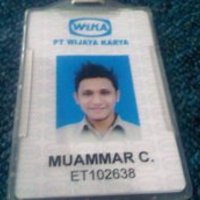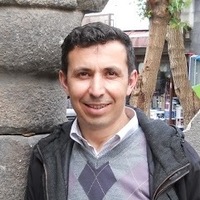Proceedings of the 2nd World Congress on Civil, Structural, and Environmental Engineering, Mar 1, 2023
In this paper, direct shear tests were conducted to evaluate the effect of randomly distributed f... more In this paper, direct shear tests were conducted to evaluate the effect of randomly distributed fibres on the shear strength parameters of dry sand. Polyolefin fibre which is a polymeric produced from a simple olefin (CnH2n) was mixed with dry sand to investigate the improvement of shear strength and effect on volume changes. Specimens with 0.5%, 1%, 1.5% and 2% of fibre contents with different lengths (i.e. 15mm and 30mm) are prepared in repeatable steps and tested in direct shear tests. In addition, two sand types; coarse sand and fin sand were used in this investigation to study the grading size effects on the behaviour of the fiber-reinforced sand. Results indicated that, the inclusion of randomly distributed discrete fibres significantly improved the shear strength of sand. The existence of polymeric fibre inside the sand developed what is called apparent tensile cohesion in addition to the sand normal internal friction angle. The optimum fibre percentage for improving both friction angle and apparent tensile cohesion was about 1%. Adding fibre more than this ratio resulted in a significant reduction in both soil shear strength parameters. The effect of fibre on sand tensile cohesion is more pronounced compared to its effect on the friction angle. A bearing capacity of hypothetical footing resting on ground surface of fibre reinforced sand was estimated and discussed. Finally, quantitative effects of fibre contents on both shear strength and volume changes for sand are presented and discussed.










Uploads
Papers by Magdi Elemam
conditions on the intensity of ground shaking of major cities in United Arab Emirates
(UAE) including Abu Dhabi, Dubai, and Sharjah, and their surrounding areas. Two time
histories for each city were chosen based on the target response spectrum that was obtained
from results of probabilistic seismic hazard analysis conducted in previous study for UAE.
Subsurface geotechnical data from more than hundred different sites were used to evaluate
the effect of local site conditions on ground response during earthquake. Dynamic properties
of soil for selected soil profiles have been generated, and one-dimensional site
response analysis has been conducted. Results are presented in terms of response spectral
accelerations (RSA) for different site classes in each city. RSA results indicated that the
surficial deposits in the studied areas have the ability to amplify earthquake ground motion
significantly with peak amplification at relatively narrow frequency range of 1.5–5 Hz
(0.2–0.67-s period). This frequency range was found to be a representative of the predominant
frequency ranges of the site classes under consideration. At higher frequencies,
slight amplification, and in some cases slight attenuation, is observed. Design response
spectra for each site class in each city were developed based on the results of site response
analysis. The developed design response spectra were compared with spectrum currently
used in each city, and the modified site coefficient is presented.
growth which is coupled with the increase in seismic activity in the surroundings.
Previous studies presents significant variations in their results whereas some recent studies
although very detailed focus on only few cities. This study reviews the results of previous
studies and presents new findings for the whole of UAE based on the improved source model
and use of next generation attenuation (NGA) equations. The peak ground accelerations,
spectral accelerations and deaggregation of hazard for major cities are presented. Moreover,
the breakdown of the range of mapped spectral accelerations (S0.2 and S1) is proposed to form
the basis for the development of site amplification factors in subsequent studies. The results
of this study indicate almost similar values of ground motion compared to some recently
published studies and smaller values compared to some earlier studies.
conditions on the intensity of ground shaking of major cities in United Arab Emirates
(UAE) including Abu Dhabi, Dubai, and Sharjah, and their surrounding areas. Two time
histories for each city were chosen based on the target response spectrum that was obtained
from results of probabilistic seismic hazard analysis conducted in previous study for UAE.
Subsurface geotechnical data from more than hundred different sites were used to evaluate
the effect of local site conditions on ground response during earthquake. Dynamic properties
of soil for selected soil profiles have been generated, and one-dimensional site
response analysis has been conducted. Results are presented in terms of response spectral
accelerations (RSA) for different site classes in each city. RSA results indicated that the
surficial deposits in the studied areas have the ability to amplify earthquake ground motion
significantly with peak amplification at relatively narrow frequency range of 1.5–5 Hz
(0.2–0.67-s period). This frequency range was found to be a representative of the predominant
frequency ranges of the site classes under consideration. At higher frequencies,
slight amplification, and in some cases slight attenuation, is observed. Design response
spectra for each site class in each city were developed based on the results of site response
analysis. The developed design response spectra were compared with spectrum currently
used in each city, and the modified site coefficient is presented.
growth which is coupled with the increase in seismic activity in the surroundings.
Previous studies presents significant variations in their results whereas some recent studies
although very detailed focus on only few cities. This study reviews the results of previous
studies and presents new findings for the whole of UAE based on the improved source model
and use of next generation attenuation (NGA) equations. The peak ground accelerations,
spectral accelerations and deaggregation of hazard for major cities are presented. Moreover,
the breakdown of the range of mapped spectral accelerations (S0.2 and S1) is proposed to form
the basis for the development of site amplification factors in subsequent studies. The results
of this study indicate almost similar values of ground motion compared to some recently
published studies and smaller values compared to some earlier studies.